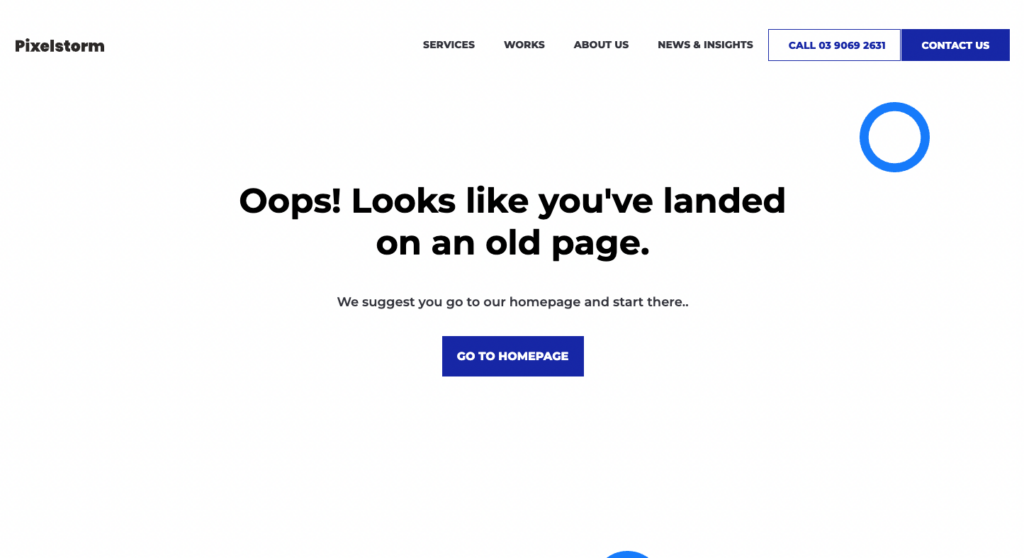A functional URL does a lot more than just tag a webpage – a good SEO friendly URL drives more traffic to your website and makes the browsing experience much more user-friendly. Ultimately, you want your URL to please both your users and the SEO algorithm. This is where our SEO agency can help – this article is the ultimate guide to SEO friendly URLs to make your web pages more efficient, clickable, and attractive.
How to optimise for SEO friendly URLS:
- Include keywords
- Use HTTPS security
- Use hyphens instead of underscores
- Make your URLs readable
- Keep them short
- Use categories and subfolders
- Stick to lowercase characters
- Implement redirections for older pages
- Match URLs to titles
Why should you optimise URLs?
In our experience at Pixelstorm, we often notice that website URLs (especially for blog pages) have not been optimised. This can cost you dearly as this makes it difficult for both users and developers to understand what the page is about from a top-level perspective. A lack of clarity reflects poor branding. Users do not want to engage with unorganised websites.
Our experts advise that you optimise your URLs right at the beginning, when you start building your website. You can also start doing this when you begin your SEO program. When you make SEO friendly URLs right at the start, you enable users to navigate your site easily, and help Google understand the page content for indexing. This is a win-win!
What is a URL made of?
URL stands for Uniform Resource Locator. This is essentially the location of any document on the internet. It contains tagging information that search engines use to organise all the pages of your website. A conventional URL is made of the following elements:
Protocol: https://
Subdomain: www.
Domain: The name of your website (“yourwebsitename”)
Top-level domain: “.com.au”
Directory: Subfolders and subtopics (“folder”)
Page/slug: The name of the current webpage (“page-name”)
How to create a SEO friendly URL structure and SEO Friendly URL examples
Each of these elements can be optimised so that your URL is seamlessly accessed by users and search engines alike. Here are 9 tips to keep in mind while creating your custom URL:
1. Include keywords
Your URL must contain optimised keywords that best describe the content of your page. Be certain to include the main keyword of your page on the URL. The main advantage of doing this is that the keyword will show up on the results page of search engines when people search for these keywords. This increases the chances of people clicking on your page – almost 70% of online experiences begin with a search engine search, so it is crucial to stand out.
2. Use HTTPS
Having HTTPS certification for your website means that your site is securely encrypted. Browsers display a warning next to websites if they are not secure, which means that people may be discouraged from opening your website. Additionally, not having HTTPS certification increases your risk of being hacked.
3. Use hyphens
If your long-form slug has more than one word, separate them with hyphens instead of spaces, underscores, or question marks. This makes them easier to type out and read. Additionally, some scripts may not display an underscore while printing the URL, which makes it difficult for users to copy and paste them.
4. Make your URLs readable
One of the most common mistakes that people make with URLs is not editing them. Whenever you create a new webpage on WordPress, Drupal, or other platforms, a default URL is created for you. More often than not, these URLs are too long or have numbers in them. Make sure to edit these URLs and make them readable by adding keywords.
Take these two URLs, for example. Clearly, one of them is easier to understand than the other!
www.examplewebsite.com/blog-posts/32472648724324
www.examplewebsite.com/blog-posts/seo-url-ideas
5. Keep them short
While adding keywords to your URLs, remember that less is more. Your URL should contain a maximum of 5 words – 3-5 words are optimal. If your long-form keyword is too long, don’t hesitate to remove stop words (like articles and prepositions). SEO taggers do not care about filler words, so you don’t have to worry about readability. Retain content words in your URL so that readers know what the page is about!
For instance, the first URL is better than the second:
www.examplewebsite.com/blog-posts/seo-url-tips
www.examplewebsite/com/blog-posts/the-best-seo-url-tips-for-your-website
6. Use categories
Wherever possible, organise your website into subfolders so that they are easier to access and read. This helps readers navigate your page better and makes your URL more accessible. Using categories and subfolders also makes it easier for developers to make changes exactly where necessary without going through numerous pages. Here is an example:

A useful template is – www.examplewebsite.com/sub-folder/page-name
In the following examples, the names in bold are categories that make it easier to organise information.
www.examplewebsite.com/blog-posts/example-blog
www.examplewebsite.com/locations/list-of-locations
www.examplewebsite.com/services/example-service
www.examplewebsite.com/testimonials/example-review
7. Stick to lowercase
Certain URLs might automatically be assigned a mix of uppercase and lowercase letters. This is not too user-friendly as they are not easy to type out. Additionally, some browsers are case-sensitive, so you run the risk of an error message if a user makes a typo. To resolve this, make sure that you use only lowercase letters on all URLs.
8. Implement redirections
If your website is a few years old, or if you want to explore a new creative direction, you might want to create new pages and disable old ones. In this case, make sure to create permanent redirects for old URLs that are not in use. This ensures that users are redirected to your latest website in case they access the old one. Paula Glynn from Pixelstorm remarks, “Clients often forget to create redirections, which costs them dearly. The last thing you want users to see is a 404 error!”

9. Match URLs to titles
In addition to using keywords in your URL, you should ensure that the slug of your URL matches the title of your article. This has two benefits – first, it is easier for users to figure out what the page is about even before clicking on it. Second, you are forced to include keywords in the title of your page, which makes it easier for search engines to tag your page.
The Bottom Line
A few good SEO practices can drastically increase the number of visitors to your website. Since the URL is usually the first thing that people see, it is worth implementing these changes to your website. In fact, the Google SEO starter guide has an entire section dedicated to creating SEO-friendly URLs. First impressions count – reach out to us for some expert advice on how to make your URLs stand out!







